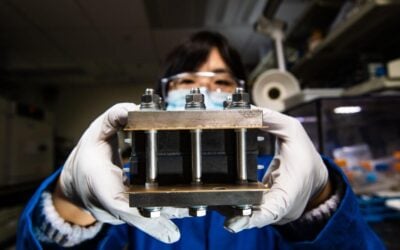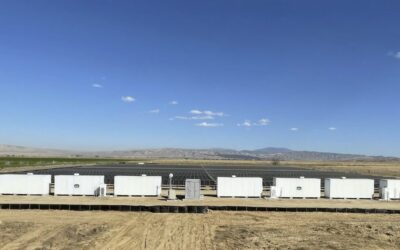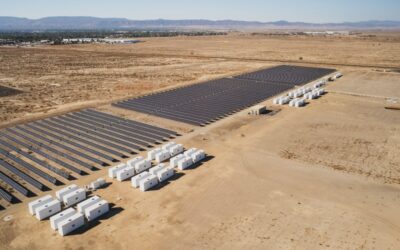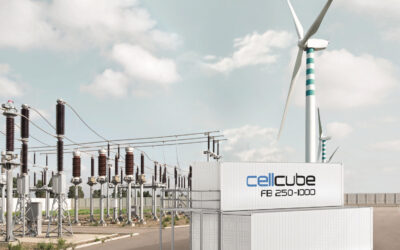Nissan to develop future EV batteries at UK plant
21 January 2016: Nissan has announced that it is set to make a significant investment in the development of the next generation of electric vehicle (EV) batteries at its manufacturing base in Sunderland, in the north east of England.
Enjoy 12 months of exclusive analysis
- Regular insight and analysis of the industry’s biggest developments
- In-depth interviews with the industry’s leading figures
- Annual digital subscription to the PV Tech Power journal
- Discounts on Solar Media’s portfolio of events, in-person and virtual
The company will invest £26.5 million (US$38 million) in manufacturing, maintenance and engineering at its UK advanced lithium-ion battery plant, safeguarding 300 jobs in the process.
The announcement signals a renewed commitment by Nissan to the plant, which has been in operation for 30 years, in advance of the launch of a new 155 mile-range Nissan LEAF on sale across Europe this month.
Paul Willcox, chairman of Nissan Europe, said: “With 200,000 customers around the world already, the Nissan LEAF has transformed the performance and perception of EVs and made Nissan the undisputed leader in EV technology.
“Today’s announcement reflects Nissan’s intention to remain EV leaders for many years to come, with our UK operations at the heart of our future innovations.”
The new investment will be led by a £19.4 million project that will see Nissan work alongside academic and technology partners in the UK.
It has been widely reported that LEAF sales this year have been low, with many pointing out that the would-be customers might be waiting for the longer range version to become available. Lux Research analyst Chris Robinson recently told Energy Storage News that in a global market for EVs and hybrids accelerating and expected to reach fierce levels of competition in three to four years’ time, he “wouldn’t write Nissan off yet”.
In related news, Nissan recently also unveiled a “software-defined power plant” which uses EV batteries to integrate a number of dispatchable distributed energy resources.
This story by David Pratt.
Ceres fuel cell. Credit: Ceres Power Twitter
Ceres Power and Honda to develop solid oxide fuel cell stacks
18 January 2016: Ceres Power Holdings has signed an agreement with Honda R&D to jointly develop solid oxide fuel cell stacks using Ceres Power’s metal-supported steel cell technology.
The partnership on products to be used in power equipment will include a third party who will look at scaling up the products for mass production.
Phil Caldwell, chief executive of Ceres Power, said: “This latest agreement with Honda represents a huge endorsement of our Steel Cell technology, in the world’s most advanced fuel cell market. We are demonstrating that we can successfully deliver on our strategy of embedding our Steel Cell technology into a variety of different power products and markets with the world’s leading companies.”
A 2104 report, commissioned by Ceres Power and other members of the fuel cell industry claimed that over five million fuel cell smart power units could be installed in the UK by 2030, equivalent to 5GW of new generation, driving a “revolution” in distributed energy.
Green Charge seals a first in energy storage financing
Vic Shao chief executive of Green Charge. Credit: Facebook
14 January 2016: Commercial energy storage specialist Green Charge Networks has closed on US$20 million in non-recourse project finance debt along with a US$30 million accordion, giving it the right to increase its line of credit, from US-based finance company Ares Capital Corporation.
The non-recourse debt financing, which Green Charge claims is the first of its kind in the storage industry, will be used for the company’s fast expanding power efficiency agreement portfolio, which includes equipment, construction and O&M of behind-the-meter projects
Green Charge’s storage soltuions aim to help customers lower their utility bills by storing energy and using it during peak periods, without having to pay upfront costs or any ongoing payments.
Vic Shao chief executive of Green Charge, who held engineering and management positions at several cloud computing software companies in Silicon Valley before co-founding Green Charge, said: “This financing gives Green Charge the ability to grow relationships with our existing customer base and extend our growing portfolio of projects.
“This is a significant milestone for Green Charge and the energy storage industry. We’ve proven that energy storage systems can provide a reliable value stream to our customers and investors.”
Green Charge currently has 31.3MWh of storage projects in operation or under construction across the education, retail, government and utility sectors.
American Vanadium plans acquisition of Gildemeister
11 January 2016: Canada-headquartered maker of vanadium redox flow battery-based energy storage systems American Vanadium plans to acquire DMG Mori’s wholly-owned subsidiary Gildemeister energy storage (now DMG MORI SEIKI).
Gildemester is the manufacturer of the CellCube vanadium flow energy storage technology product.
Bill Radvak, president and chief executive of American Vanadium, said: “With 15 years since R&D began, seven years since the commercial launch of its first system and now having installed more than 100 units, the CellCube has successfully been established as the world’s most commercially advanced flow battery. With our plan to provide a CellCube finance program, as well as invest in scaling manufacturing and further reduce CellCube production cost, we look forward to building the business into a global energy storage leader.”
American Vanadium is currently trying to develop a mine for its raw materials in Nevada. It is likely to take several years to complete, if successful. The company patented a process for purifying vanadium in 2012.
Radvak added: “Our vertical integration strategy of combining the ‘best in class’ CellCube system and American Vanadium’s future development of high purity vanadium electrolyte from the Gibellini Vanadium Deposit located in Nevada presents a unique opportunity to create a global leader at an opportune time.”
American Vanadium has been using CellCube for its projects since partnering with Gildemeister three years ago. Its first deployment by the former was at New York’s Metropolitan Transport Authority building. At the time, Radvak blogged for Energy Storage News (then PV Tech Storage) that: “the knowledge gained from this demonstration will help realise gains in building and grid energy efficiencies, save money for electric ratepayers and, importantly, add a new weapon to the arsenal of resiliency tools in the event of future grid outages”.
This article has been amended to remove an incorrect reference to the length of time that American Vanadium has been partnered with Gildemeister and updated to add reference to the NY MTA project.





